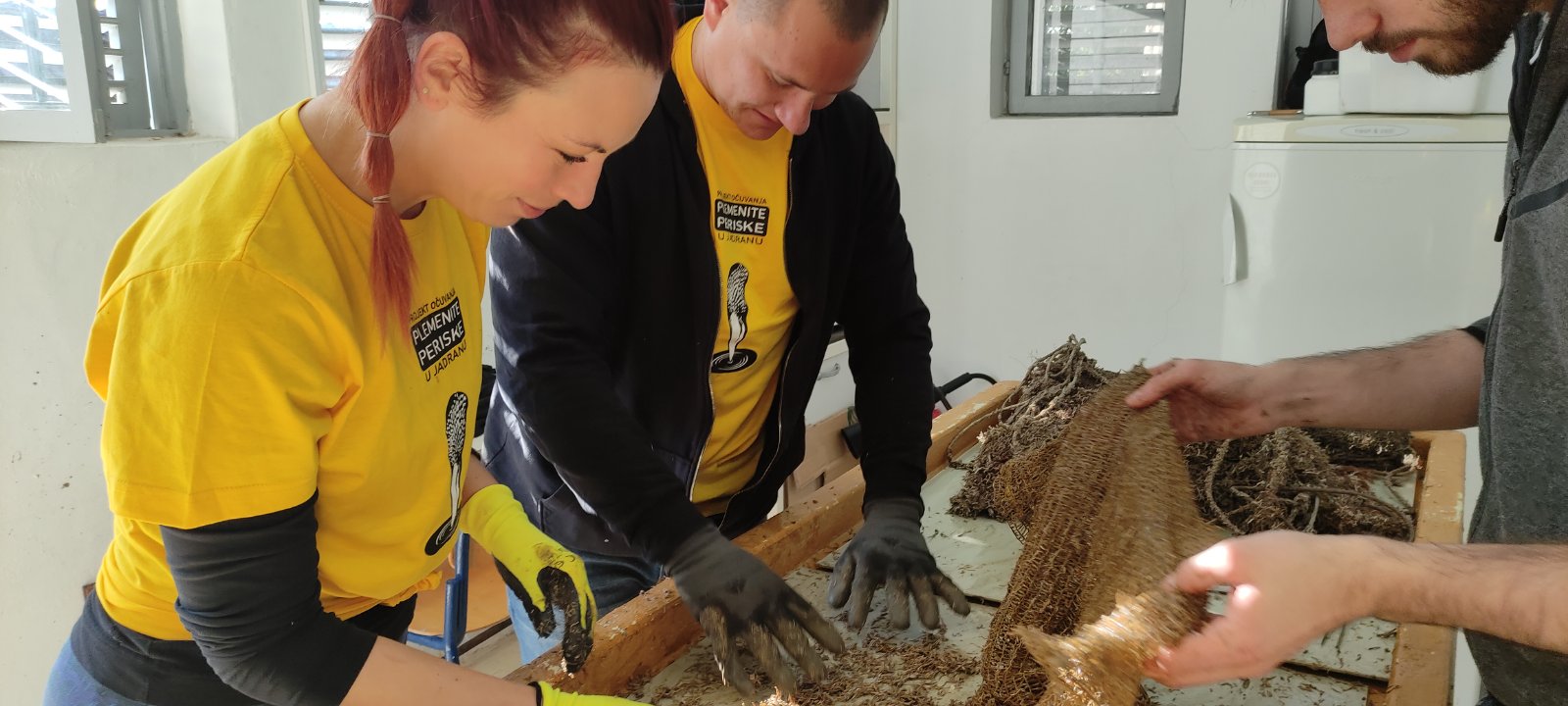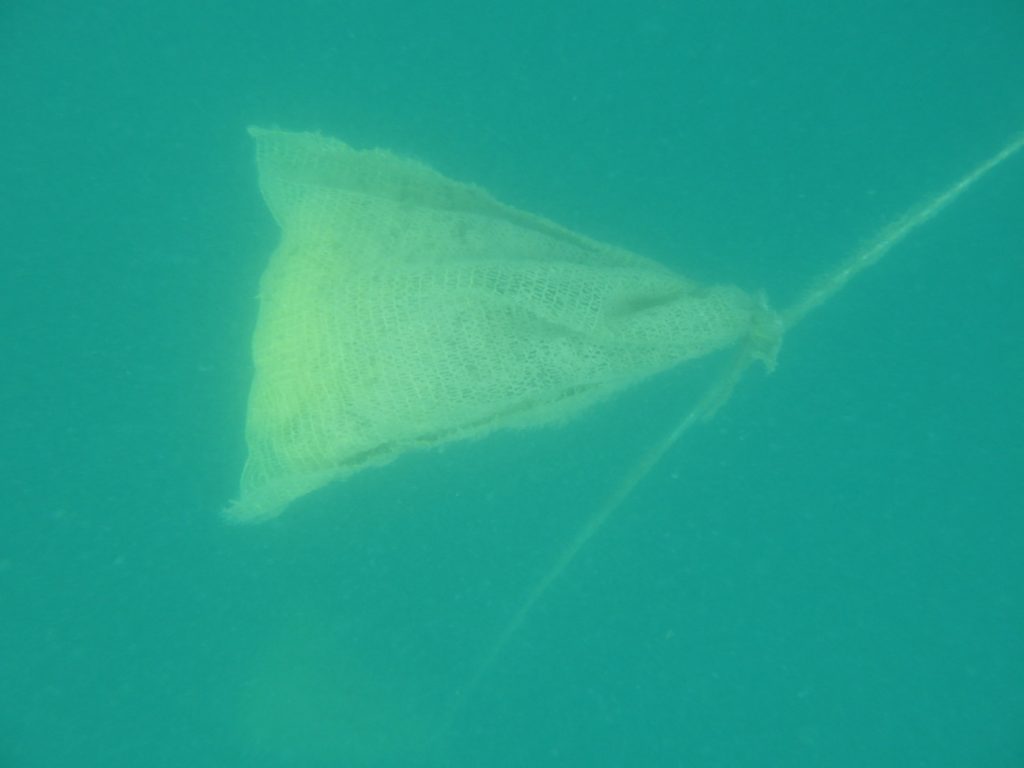
Within the project of Noble Pen Shell (Pinna nobilis) Preservation in the southern part of the Adriatic Sea, the employees of the Department of Applied Ecology of the University of Dubrovnik extracted the collectors for the endangered juvenile Pinna nobilis. The collectors had been installed in June of 2022 in the Mali Ston Bay area. Namely, this largest endemic bivalve of the Mediterranean Sea, which can be found in soft-bottom habitats of transitional water ecosystems and in sandy and muddy and even rocky sea bottoms of various depth, has been falling as a victim of a parasite that has been critically endangering its colonies from autumn 2016. Since the possibility to preserve Pinna nobilis depends on the occurrence of healthy specimens that have either survived the disease or have not been infected at all and are capable to reproduce, the collectors for juvenile Pinna nobilis had been installed throughout the Croatian part of the Adriatic Sea in the areas that are suitable for the Pinna nobilis colonies. Namely, in the warm part of the year, Pinna nobilis emits male and female sex cells that merge after they come in contact in the water, and produce larvae. These larvae, after having spent some time living as plankton, develop into juvenile specimen that need favourable surface for their its further growth. The above-mentioned collectors had been installed following the IUCN recommendations in order to see whether some types of nets have a favourable effect on juvenile colonisation. Their content was analysed after the possibility of a breeding season had passed. As was the case last year, unfortunately, this season also did not see a single juvenile specimen of Pinna nobilis.













